Saving the only flying mammals
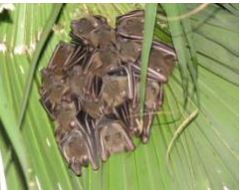
Mammals that Fly
Bats are the only true flying mammals in the world. Their forelimbs have evolved into webbed wings, which are full of touch-sensitive receptors to detect air flow and make flying more efficient. They are widely found throughout the world except for the Arctic, Antarctica and some isolated oceanic islands.
Bats are not blind. Although the eyes of most insect-eating bats are small, they can actually see quite well. Most fruit-eating bats even have large round eyes which help them to locate their feeding grounds and fruiting trees at night. Echo-location is employed by insect-eating bats to locate prey or to avoid objects while flying. They normally emit sounds at high frequencies between 12 kilohertz to 100 kilohertz. Some species may even emit sounds up to 160 kilohertz. Humans are only able to hear lower sound frequencies from 20 hertz to a higher frequency of 20 kilohertz.
Bats in Hong Kong
There are more than 1,200 bat species worldwide. So far, 26 bat species have been recorded in Hong Kong (Shek, 2006). Due to its seasonal tropical climate, Hong Kong has a rich bat biodiversity. There are both insect-eating and fruit eating bats. The Short-nosed Fruit Bat (Cynopterus sphinx) and Japanese Pipistrelle (Pipistrellus abramus) are among the most commonly found bats in both rural and urban areas. The Leschenault’s Rousettes (Rousettus leschenaulti) are the largest bats in Hong Kong with a body length which can reach 13 cm.
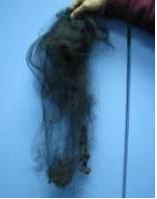
Threats to Bats in Hong Kong
Natural predators of bats include snakes, owls, hawks, civets and domestic cats. However, the most serious threats to bats are human related disturbances. Natural habitats for roosting and feeding are being lost due to changes in land use and loss of forest. Mist nets may be illegally placed by farmers to kill bats in order to protect fruit crops and flowers.
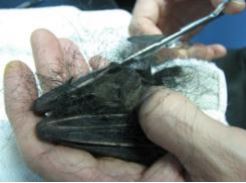
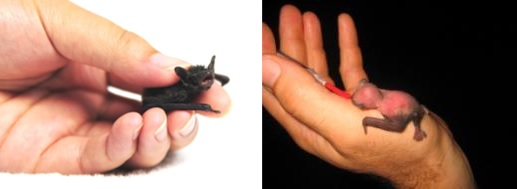
The juvenile Japanese Pipistrelle (left) weighed only 2.5 gram when it arrived at KFBG. A keeper using a feeding tube to feed a young, hairless Noctule Bat (Nyctalus noctula) (right).
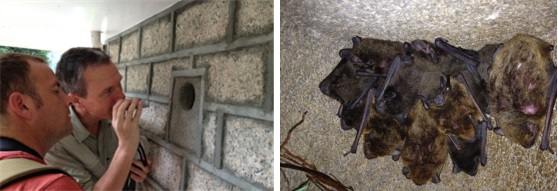
Inspection of bat boxes is carried out to monitor the bat populations at KFBG (left). A group of Japanese Pipistrelles (right) found in an artificial nesting box in Kwun Yum Garden.
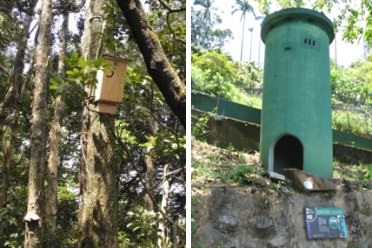
A Bat Box (left) and a Bat Tower (right) are installed at KFBG to provide alternative roosts for bats.
Bats are Good for the Planet
People may ask the question “Why is installing a bat box useful?” The answer is that bats help to control insect populations. Insect-eating bats prey on moths, mosquitoes, termites and flying ants at night, and, thereby decrease the number of insects in your area. This is an important role they play in nature but it can also be beneficial to us. You can provide shelters for them while they control the insect populations in an environmentally-friendly way.
Fruit-eating bats play a critical role in contributing to the health of forests. They disperse seeds, either by dropping fruits while eating or depositing seeds after digestion. Some fruit-eating bats can even fly long distances, so this means that they are able to spread seeds from the original forest to other places, promoting more plant diversity on our planet.
You Can Make a Difference
If you see any fallen bats or illegal mist nets set for trapping bats, please contact KFBG at (852) 2483 7136 or the Agriculture, Fisheries and Conservation Department Hotline: (852) 1823. We should work together to protect our precious natural heritage.
References:
Bat Conservation International (www.batcon.org)
Bat Conservation Trust (www.bats.org.uk)
Books:
Ades, G.W.J., Chiu, S.T. and Chan J., 2008. A Teacher's Guide to the World of Bats,
Kadoorie Farm and Botanic Garden, Hong Kong, China.
Shek, C.T., 2006. A Field Guide to the Terrestrial Mammals of Hong Kong.
Friends of the Country Parks and Cosmos Books Ltd.
Ades, G.W.J., R.C. Kendrick, 2006. Focus on Hong Kong Bats: Their Conservation and the Law, Kadoorie Farm and Botanic Garden, Hong Kong, China.

